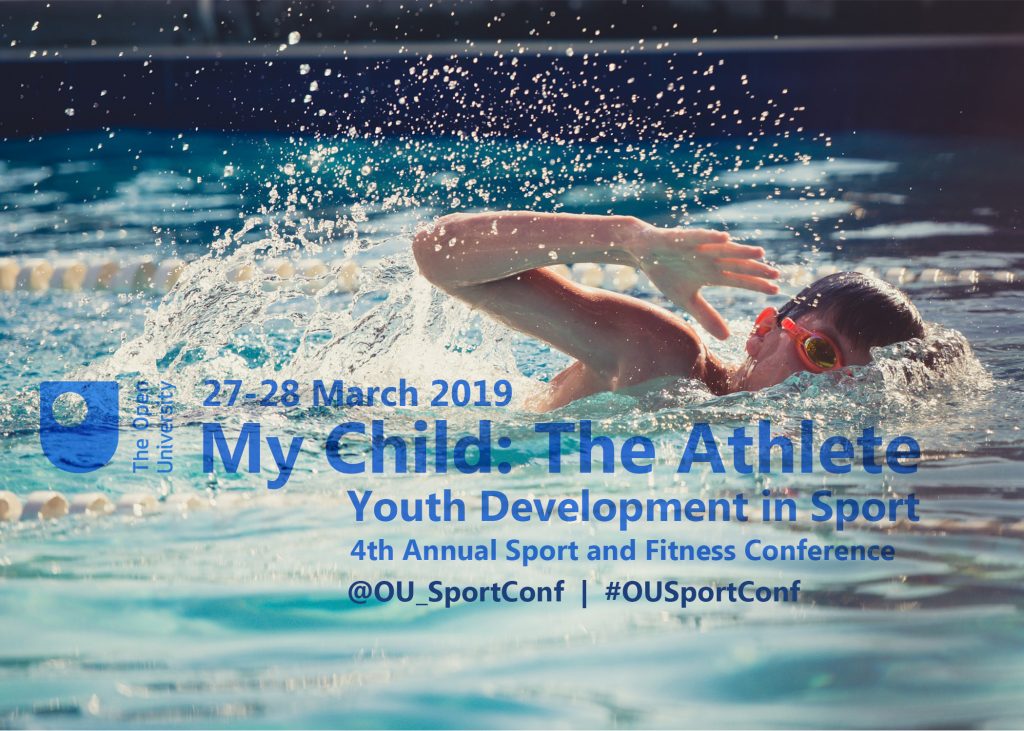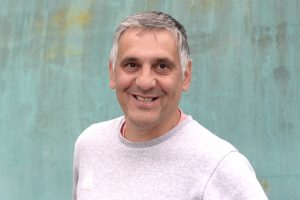By Jessica Pinchbeck
To become an Olympic athlete requires an abundance of hard work, determination, talent and plenty of support. Top athletes typically have teams of coaches, sports scientists, nutritionists, physiotherapists and psychologists working with them around the clock, but at times a simple hug or words of support from mum or dad are invaluable to the athlete. Being an Olympic parent is not an easy job. Aside from the obvious financial and logistical support it’s important to know when to step in and offer emotional support and when to step back and let others take over. For most athletes continued family support is crucial and plays a large part in their success, with many of the London 2012 Team GB athletes attributing their achievements in the games to their parents:
‘You forget your mum and dad are probably more nervous than you … but I just felt so happy I could reward them now and give them back a gold medal for all their help and support down the years. It made me think of how supportive my family had been through the years, how through all the sports I tried they were there pushing me on, driving me to Eton for track or to Birmingham for football. They always gave me everything I needed.”
(Greg Rutherford, 2012 Olympic gold medalist)
In most cases parents are responsible for introducing their children to sport. For example GB Downhill skier Chemmy Alcott began skiing at only 18months old with her first race aged 3 years! Likewise the summer athletics camp Jessica Ennis-Hill’s parents’ saw as ‘cheap childcare’ proved instrumental in her athletic development as did Andy Murray’s frequent visits to the Tennis club where mum, Judy, coached.
As well as introducing their children to activities families provide help to athletes in a variety of ways and Tom Daley remembers his mum and dad showing their support early on in his career:
‘For my Tenth birthday, in May 2004, mum and dad got me a massive trampoline to go in the garden. I could always practise the somersaults and twists I needed for my diving’.
Parents of sporting children can often find themselves providing extensive logistical and financial support which can impact the rest of the family and dominate family time spent together. Louis Smith’s mum Elaine recalls:
‘I made the effort to take Louis to a gym 26 miles from home and was paying up to 100 pounds a week on petrol because I knew it would give him a better chance of success.’
Family support is a crucial factor for most athletes throughout their career however the role of the family and the type of support required changes throughout the athlete’s development. A key researcher in this area is Jean Côté who developed a model of sport participation.
The Sampling Years
Côté labelled a child’s initial stages of involvement in sport ‘the sampling years’ and these are said to occur when children are aged between 6-13 years. During this stage the role of the parents is to provide opportunities for their children to enjoy sport, encouraging all children within the family unit to participate in a range of different sporting activities. It is often within this stage that parents recognise their child is particularly talented in an activity.
‘Lots of people used to tell me how much natural ability she had. And there was one or two people who said she could go a long way in athletics… I was a bit cautious… I suppose I wanted to be protective of Jessica…’
(Alison Powell, mother of Olympic Athlete Jessica Ennis-Hill)
The Specialising Years
As children got older Côté discovered that they tended to become committed to one or two sports. For example Usain Bolt was a keen cricketer as well as a sprinter and Chris Hoy represented Scotland in rowing as a junior before taking up track cycling. At this stage the family start to make a financial and time commitment to their child’s activities and their own interest in the sport begins to grow. At this stage most families tend to still place emphasis on both school and sport achievement. GB ski slopestyle athlete James Woods explains how he had to persuade his parents to agree for him to go to Mayrhofen for two months during his GSCE year, and then to complete his A-levels by email the following season!
Côté also found that within those families where the child athlete had older siblings they often acted as role models to the athlete. Olympic Triathlete Alistair Brownlee jokes, ‘I did pretty much everything first then Jonny copied me like a year later’ and Katie Summerhayes, GB ski slopestyle medal hope, showed the way for younger sister Molly ‘in 2010…Molly and I placed 1st and 2nd at the Brits. Molly is 16 now and just joined the British team programme’. Siblings certainly have a role to play in athletic development although the exact nature of these relationships is still an emerging area of research within sport.
The Investment Years
At around the age of 15, although this can be earlier for some sports such as gymnastics, Côté ‘s research showed that the athlete tends to commit to one sport. At the age of 15 Andy Murray made a big decision, supported by his parents, to move to Spain to enhance his performance and develop a stronger work ethic. Zoe Gillings GB Snowboarder describes how being home schooled helped her to commit to snowboarding as they travelled to the Alps for 6-8 weeks each winter. Research suggests that during these years parents tend to show the greatest interest in their child’s sport. However this dedication can give rise to sibling jealousy, as siblings may resent the time and money that parents have to spend with the athlete in the family.
Family support at this stage also shows parents helping and supporting athletes when they experience setbacks such as injury. GB skier Chemmy Alcott, whose participation in Sochi looked doubtful following a leg break, feels her family played a large part in her recovery:
‘My family are the reason I have the strength to come back and give it one last go. My parents sacrificed so much for me growing up and my mother was a huge driving force behind helping me realise my dreams.’
Following this ‘investment stage’ Côté describes the athlete moving on to face the challenge of maintaining and perfecting their performance. For most athletes the support of their family still features heavily at this stage. Shelley Rudman, GB Skeleton athlete, explains how the support from both her parents and her husband’s parents in looking after her daughter Ella, have been invaluable in the build up to the Games:
‘Kristan and I are both competing, which is different, but we work it really well between us and we rely heavily on our families for support.’
Conclusion
As we can see the recipe for sporting success requires a variety of ingredients, the family, and in particular parents, providing for some athletes one of the most important. The support offered is unconditional and rarely an easy job, it is one that sees much sacrifice and while the destination may ultimately be success, the journey may have encountered some bumps along the way. What we can be sure of is that we will see some very proud faces in Sochi, an event which for many will be the culmination of four years very hard work and commitment for both athlete and family. Undoubtedly one of the most touching moments of the games so far is that of Jenny Jones, who dislikes competing in front of her parents, being reunited with her mum and dad after winning Britain’s first ever medal on snow. Her parents had travelled to Sochi without Jenny knowing and stayed out of her sight until being unable to resist congratulating their daughter following her success. Jones’ mum could be heard to say ‘you’ve never disappointed us’ an illustration of the unconditional support parents often provide.
References:
BBC (2013) ‘Shelley Rudman ‘had skeleton funding cut after pregnancy’ [online] Available from: http://www.bbc.co.uk/sport/0/winter-sports/21715720 (Accessed 27 January 2014)
Bell, G. (2013) ‘Chemmy Alcott: The Olympic Interview – ‘Now I want it more’ [online] Available from: http://www.telegraph.co.uk/travel/snowandski/10273497/Chemmy-Alcott-The-Olympic-Interview-Now-I-want-it-more.html (Accessed 21 January 2014)
Bell, G. (2013) ‘Zoe Gillings: The Olympic Interview’ [online] Available from: http://www.telegraph.co.uk/travel/snowandski/features/ski-interviews/10473638/Zoe-Gillings-interview-2014-Winter-Olympics.html (Accessed 21 January 2014)
Bell, G. (2013) ‘Katie Summerhayes: The Olympic Interview’ [online] Available from: http://www.telegraph.co.uk/travel/snowandski/features/ski-interviews/10516640/Katie-Summerhayes-interview-2014-Winter-Olympics.html (Accessed 21 January 2014)
Bell, G. (2013) ‘James woods: The Olympic Interview’ [online] Available from: http://www.telegraph.co.uk/travel/snowandski/features/ski-interviews/10574812/James-Woods-interview-2014-Winter-Olympics.html (Accessed 21 January 2014)
Daley, T. (2012) ‘My Story’ Penguin Books Ltd, The Stand, London.
Lewis, A. (2013) Shelley Rudman on her Sochi hopes and teaching her daughter [online] Available from: http://www.bbc.co.uk/sport/0/get-inspired/25093179 (Accessed 21 January 2014)
Maxifuel (2014) ‘The Brownlee Brothers: GB Olympic Gold and Bronze Medalists’ [online] Available from: http://www.maxifuel.com/team/brownlee-brothers (Accessed 21 January 2014)
Shivspix (2012) ‘Chemmy Allcott: A race with meaning’ [online] Available at: http://www.shivspix.com/2012/12/07/chemmy-alcott-a-race-with-meaning/ (Accessed 23 Jan 14)
 Twitter
Twitter








